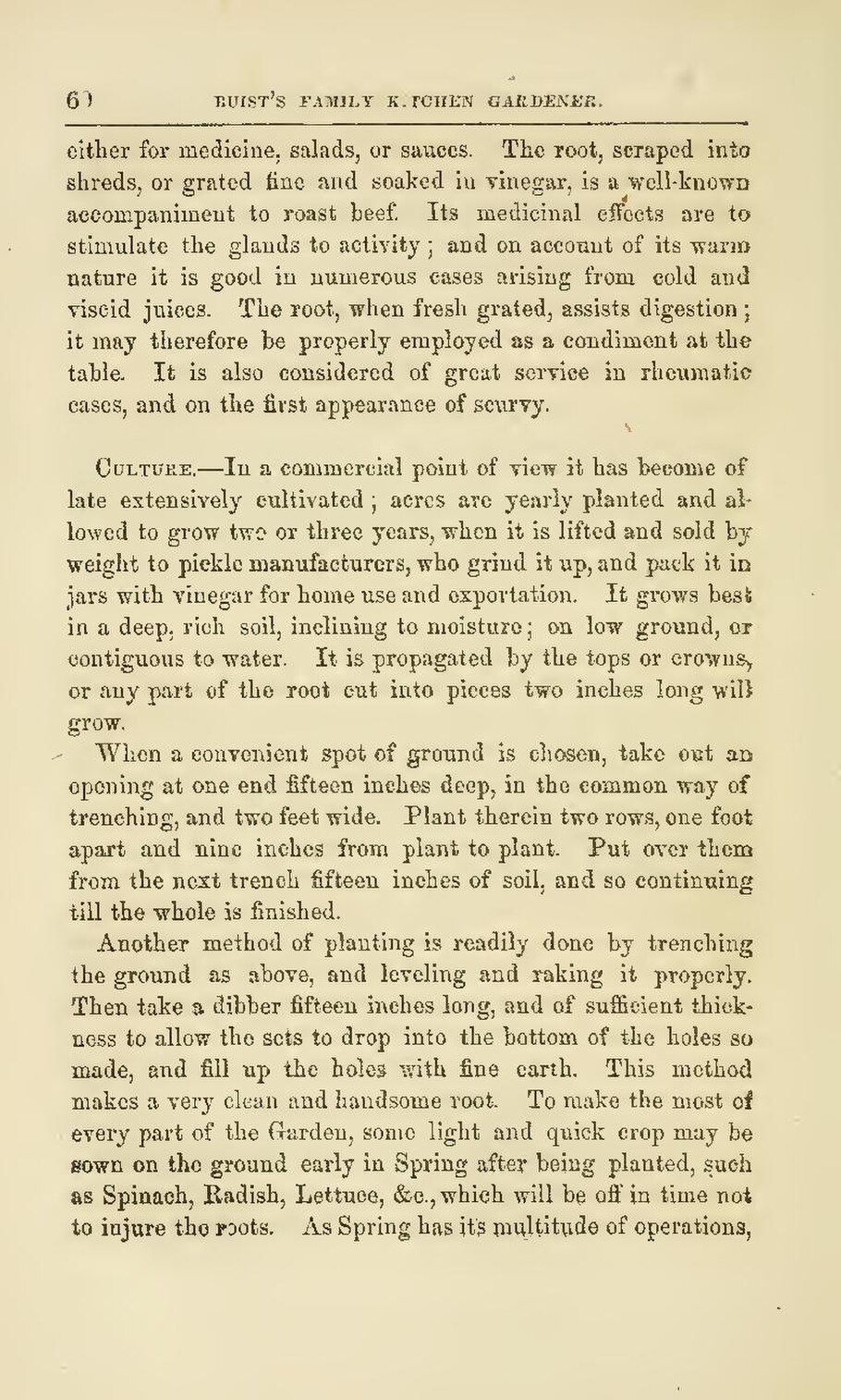either for medicine, salads, or sauces. The root, scraped into shreds, or grated fine and soaked in vinegar, is a well-known accompaniment to roast beef. Its medicinal effects are to stimulate the glands to activity; and on account of its warm nature it is good in numerous cases arising from cold and viscid juices. The root, when fresh grated, assists digestion; it may therefore be properly employed as a condiment at the table. It is also considered of great service in rheumatic cases, and on the first appearance of scurvy.
Culture.—In a commercial point of view it has become of late extensively cultivated; acres are yearly planted and allowed to grow two or three years, when it is lifted and sold by weight to pickle manufacturers, who grind it up, and pack it in jars with vinegar for home use and exportation. It grows best in a deep, rich soil, inclining to moisture; on low ground, or contiguous to water. It is propagated by the tops or crowns, or any part of the root cut into pieces two inches long will grow.
When a convenient spot of ground is chosen, take out an opening at one end fifteen inches deep, in the common way of trenching, and two feet wide. Plant therein two rows, one foot apart and nine inches from plant to plant. Put over them from the next trench fifteen inches of soil, and so continuing till the whole is finished.
Another method of planting is readily done by trenching the ground as above, and leveling and raking it properly. Then take a dibber fifteen inches long, and of sufficient thickness to allow the sets to drop into the bottom of the holes so made, and fill up the holes with fine earth. This method makes a very clean and handsome root. To make the most of every part of the Garden, some light and quick crop may be sown on the ground early in Spring after being planted, such as Spinach, Radish, Lettuce, &c., which will be off in time not to injure the roots. As Spring has its multitude of operations,
